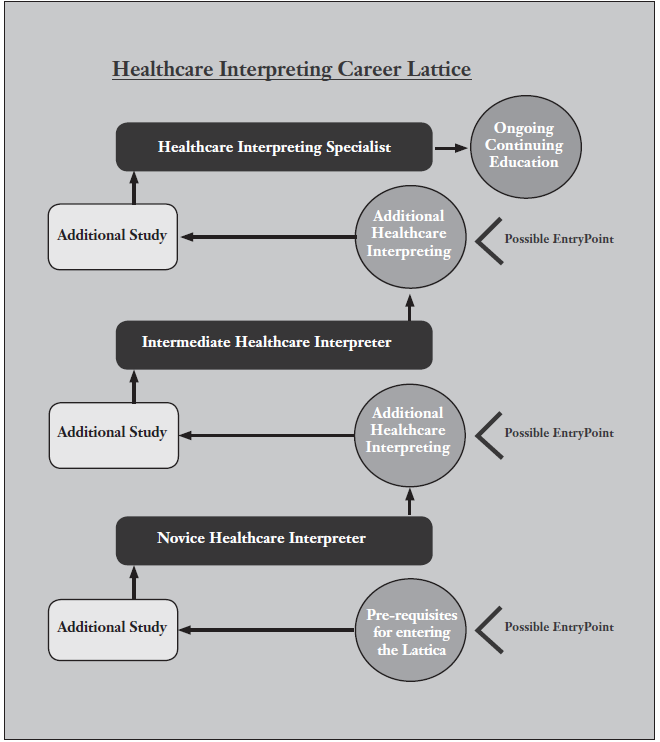5: Interpreting in Healthcare Settings: More than Needles, Blood, and Terminilogy
1/30
There's no tags or description
Looks like no tags are added yet.
Name | Mastery | Learn | Test | Matching | Spaced |
|---|
No study sessions yet.
31 Terms
Healthcare interpreting
includes medical and mental health interpreting
addiction and recovery
massage
aromatherapy
acupuncture
Healthcare setting: Observing Physical or Emotional pain
received bad news about their own health or of a loved one
have acute injury or chronic conditions affect use of language
on medication or coming off of anesthesia
Intimacy
interpreters will see what is normally physically or emotionally private/personal
Respect
position yourself to give the patient the most privacy (near the shoulders during pelvic exams, etc.)
requests for specific gender interpreter
confidentiality
Infection control and Industrial Safety
wear protective clothing
follow safety precautions regarding bodily fluids and sharp object
shoe type
hand washing
rules about what surfaces and objects you can touch
Vicarious trauma
When service providers who see or hear about intense pain, violence, or loss stat to absorb the trauma themselves
Self-Care
understand triggers and unpredictability of healthcare interpreting.
blood, excrement, vomit, audible pain
Patient
a person receiving or registered to receive medical treatment
How can patients differ?
age
class
sexual identity
familiarity with healthcare system
langauge use
citizens or immigrants
Triadic
interaction is between the provider, patient, and interpreter
Family members
small children
extended family
fluent in ASL
home signs only
supportive
oppositional
CDI or DI
Certified Deaf Interpreter or Deaf Interpreter
What is one marker of a highly competent interpreter?
knowing when a specialist is needed
CDIs are critical in healthcare interpreting. What situations can they help navigate?
Nuanced communication across a range of signing styles influenced by
region
culture
age
literacy
education
class
physical health
cognitive health
mental health
Deaf healthcare professionals and graduate students often work with
designate interpreters
True or False: Once certified, interpreters are competent to work in any setting, including legal, healthcare, education
False
Health Literacy
the ability to get information a person needs about one’s health, understand that info, and use that info to make informed decisions about one’s health and the care on receives
What general things should you know for healthcare interpreting?
public or private healthcare system
various medical specialties
body systems
various types of nurses, PAs, doctors, residents, techinicians
uniform requirements (names tags)
HIPPA
Health Insurance Portability and Accountability Act
Adaptive performance
how a person adjusts to changes and stress in the workplace
People who are highly adaptable tend to
perform well
have positive attitudes
deal well with stress
Doctor-Patient Communication
structure and goals of the healthcare interview and how healthcare providers establish rapport with patients
Medical terminology
medical conditions and diseases
anatomy and body systems
common drugs
tests and procdures
Greek and Latin roots, prefixes, suffixes
What are some reasons a lexical correspondents in a language pairing is lacking?
young vs. old languages
different syntactic structures
far apart, historically
modality
What is crucial for successfully navigating the linguistic and culture complexities of healthcare interpreting?
deaf-hearing teams; CDI or DI
In any given healthcare setting, what is the ultimate goal?
the patient’s health and well-being
What does this chapter’s author say is a must have before accepting work in the healthcare field?
supervised fellowship or practicum experience
What are the benefits of VRI, specifically as it relates to the healthcare setting?
conducted quickly
potentially more private (anonymous)
allows for access to hard-to-reach specialists
What are the cons of VRI, specifically as it relates to the healthcare setting?
tech failure
poor picture quality
screen is small or hard to see
equipment not available
patients might have physical limitations - can’t lift head to see screen, lift hands to sign, etc.
In 2006, the St. Catherine University CATIE Center identified knowledge domains needed for medical interpreting. Those are
Healthcare systems
Multiculturalism and diversity
Self-care
Boundaries
Preparation
Ethical and professional decision making
Language and interpreting
Technology
Research
Legislation
Leadership
Communication advocacy
Professional development

Career lattice
a flexible framework for employee growth and development that allows for movement in multiple directions (up, down, sideways, and diagonally) within an organization, unlike the traditional, linear "career ladder" model.